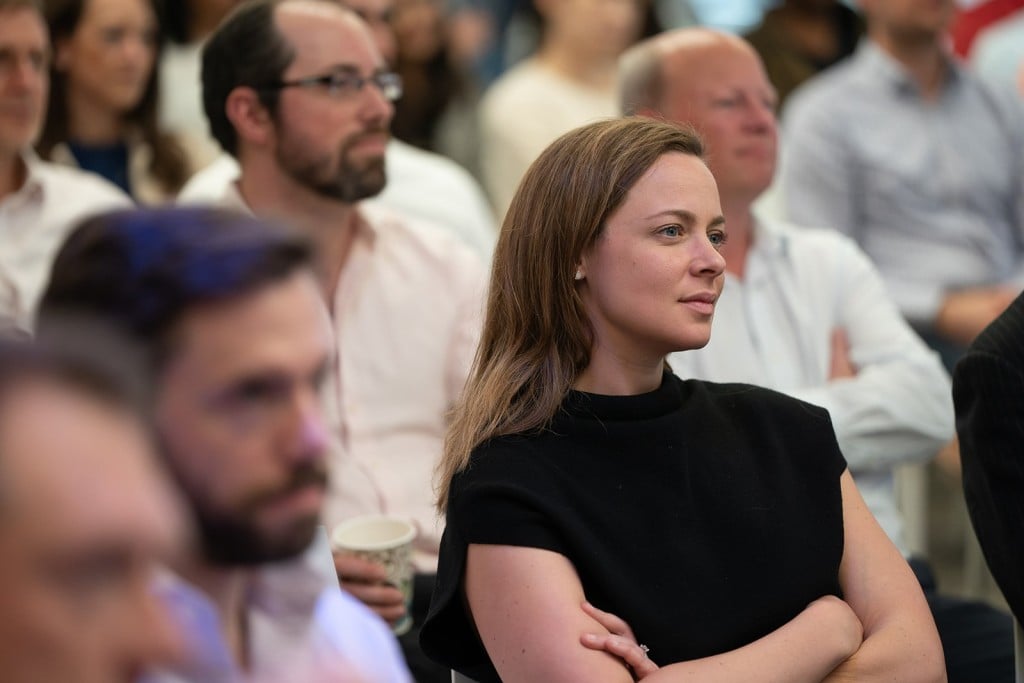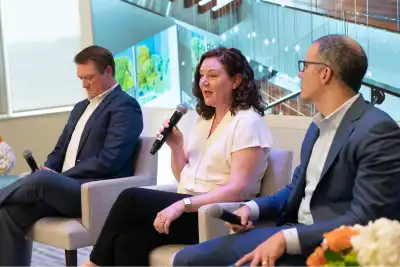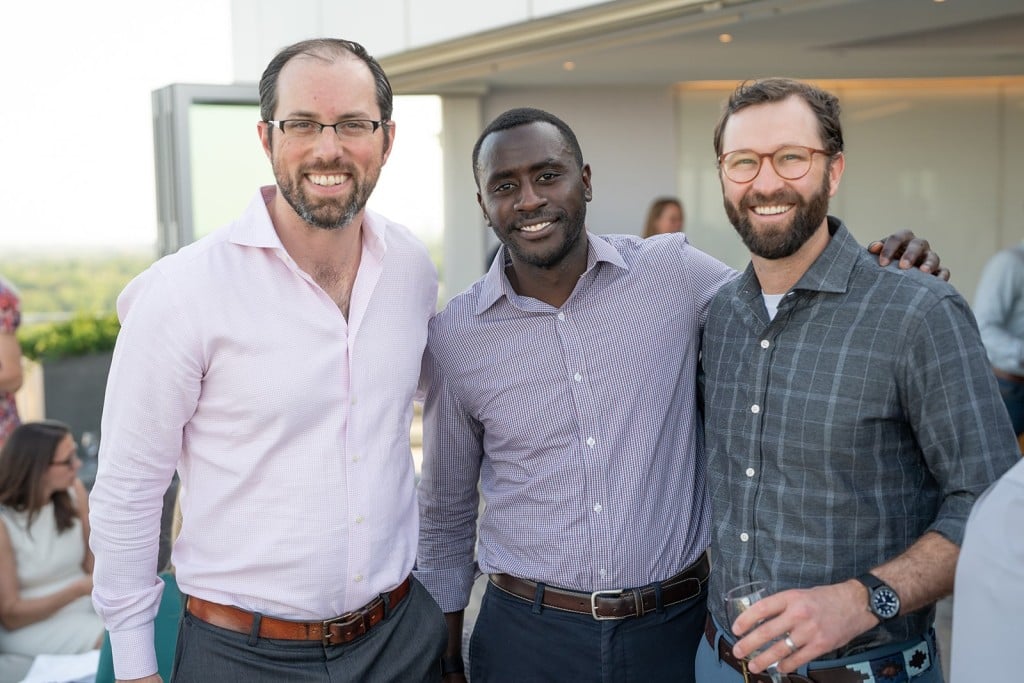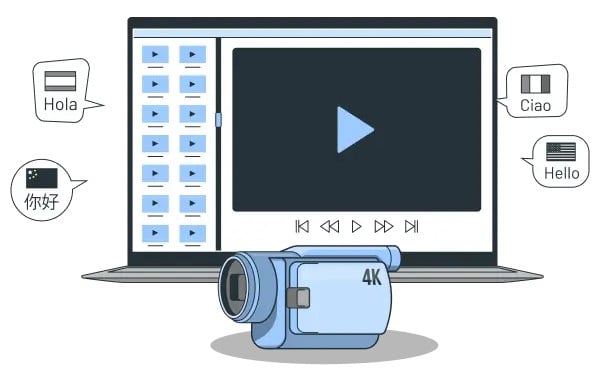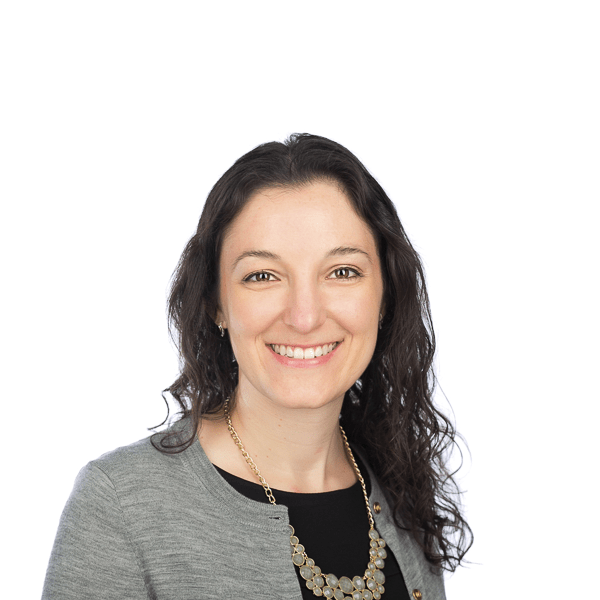Digital Devices are Enabling a Healthier World
Healthcare companies are leveraging advances in technology to make smarter and smaller medical devices that enable earlier diagnosis and better treatment of disease.
Contributors
March 2023
Goodbye, finger sticks. That’s part of Dexcom’s most recent advertising campaign to highlight how its wearable continuous glucose monitor (CGM) is revolutionizing diabetes care. In fact, the company engaged pop icon Nick Jonas—who manages his diabetes with the company’s CGM—as a brand warrior who appeared in Dexcom’s commercial during the 2021 Super Bowl game. That’s all part of its effort to spread the word about its small body sensor that provides continuous data, predictive analytics, and insights on blood glucose (sugar) levels that make managing diabetes easier.
Healthcare companies are leveraging advances in technology—like miniaturized electronics/semiconductors, biosensors, algorithms based on artificial intelligence (AI) and machine learning (ML), and cloud-based software applications— to make smarter and smaller medical devices. This digitalization of devices is transforming medicine, enabling earlier diagnosis and better treatment of disease. Empowered by easier to use options, doctors are expanding access to more patients. These patients, armed with more data and information, are often able to take greater control of their disease.
Thanks to these innovations, the adoption of medical devices is proliferating. Dexcom, along with companies like iRhythm Technologies, and Exo Imaging, are among the pioneers that are aligning stakeholders to embrace modern digital technology in the medical community. They are leveraging what has been done in the technology and consumer industries for years, with the hope of improving outcomes, reducing costs, and ultimately saving lives.
This potential to digitalize more devices has deepened innovation pipelines of public companies and given rise to many private companies. In addition to the new diabetes solutions pioneered by Dexcom, we see the future in iRhythm’s wearable heart biosensors powered by AI that have been proven superior to legacy technology for detecting irregularities.1, 2 In the private markets, Exo Imaging is creating new solutions for imaging with its digital handheld ultrasound. Not only do these systems have the potential to facilitate better and more personalized care, but they have the potential to enable greater access to medical care around the world.
We believe innovative life sciences companies that use digital technologies to improve the standard of care will be able to take advantage of an enormous U.S. and international market of unserved and underserved patients. These companies are part of what we see as a life sciences revolution, creating exciting opportunities for select businesses that can capture and create value for long-term investors.
Seeing the Previously Unseen
Despite all the attention focused on the increase in global population affected by diabetes, heart disease, and other maladies that characterize modern society, patient numbers are still growing. For instance, global prevalence of diabetes is increasing faster than expected. Health organizations estimated that some 150 million people were living with diabetes in 2000 and predicted this would grow to 300 million by 2030. Sadly, the number surpassed 500 million people in 2021. Compounding this is that diabetes has become harder to control, with only 50 percent of diabetics meeting blood sugar targets, down from 57 percent a decade ago, leading to worsening outcomes and escalating costs.3
We believe Dexcom’s CGM, as well as other advanced health devices, can help break the cycle. Until the advent of CGM, people with diabetes only got intermittent snapshots of their blood glucose levels via finger sticks, often just a few times a day. These stagnant datapoints missed the real time dangers and damage due to fluctuations in glucose levels.
Dexcom changed the game when it wrapped a novel sensor technology into a digital system powered by algorithms. Its technology continuously predicts and alerts patients of blood glucose trends via their smartphone, empowering them to act against their disease before reaching dangerous blood glucose lows and highs. This window into previously unseen data has driven significant benefits for people with both Type 1 and Type 2 diabetes. Studies have shown similar results—people with diabetes who use Dexcom’s system have better outcomes while avoiding serious and costly complications associated with extreme variations of blood glucose levels.4
iRhythm, through its wearable biosensor for arrhythmia detection, and Exo Imaging, with its point-of-care ultrasound solutions, are helping to open similar windows into previously unseen data. Their powerful and intuitive solutions provide meaningful information packaged in a solution that enables broad adoption, which should ultimately lead to better outcomes.
Addressing Unmet Needs for Massive Patient Populations
Today, people with Type 1 diabetes in the United States are the primary users of Dexcom’s CGM. While this market is still underpenetrated, over 90 percent of people with diabetes have Type 2 and most people with diabetes live outside the United States.5 Dexcom is just beginning to address these much larger patient populations with continued innovation (soon launching a next-generation device that’s smaller and easier to use), strong clinical evidence, and expanding reimbursement and awareness globally. We estimate an addressable market of more than 100 million global patients in the next five years, providing a significant runway from Dexcom’s 1.3 million patient user base today.6
We have found similar patterns with heart disease monitoring, as bringing visibility to previously unseen data addresses significant unmet needs. For instance, iRhythm, which estimates that more than 11 million people in the United States alone suffer from irregular heartbeats (arrhythmias), pioneered a solution at the center of solving another large medical problem—underdiagnosis of atrial fibrillation (the most common arrythmia). Atrial fibrillation is a leading cause of stroke—a debilitating, if not fatal, condition—and is a significant cost burden on the health care system. Legacy Holter monitors, which use clunky wires and electrodes, can only be worn for up to 48 hours and fail to detect almost half of arrythmias.7 iRhythm’s Zio, a 14-day wearable biosensor, on the other hand, detects significantly more arrhythmias, opening another window to previously invisible data. This is a game changer as early detection of atrial fibrillation significantly improves outcomes and reduces hospitalizations.8
While it has penetrated just 20 percent of its core market, iRhythm is laying groundwork to expand to earlier-stage patients and international markets, which would more than double its addressable market in the next five years. It is creating new form factors to improve ease of use, including a third-generation biosensor that’s smaller and lighter, and a wristwatch. It’s also working with international regulatory and reimbursement bodies to drive global adoption. Ultimately, we expect iRhythm to displace legacy technologies and become the standard of care for arrhythmia detection, and like Dexcom, to address previously untreated populations.9
Exo will enter a market that is already undergoing a radical transformation driven by point-of-care systems. Ultrasound systems have been around for decades, enabling specialized physicians to see inside a patient’s body and speed the discovery of internal bleeding, heart irregularities, an ectopic pregnancy, and a myriad of other conditions in the past two decades, these systems have become smaller and more distributed, with most emergency departments embracing them to speed the triage of patients. In the past few years, ultrasound maker, Butterfly Networks, took this even further by creating a system physicians can carry in their pocket.
This has transformed physicians’ expectations of ultrasound, and handheld units are now issued as part of emergency medicine residency programs at a number of leading institutions.10 As more advanced devices, like Exo’s Iris, launch and are accompanied by the training and software to enable more users to access this powerful technology, some speculate that point of care ultrasound can become as ubiquitous as the stethoscope, enabling all physicians to ‘see’ what they have historically only been able to ‘hear’.11
According to our research, since its late 2018 launch, Butterfly has sold nearly 50,000 of its handheld units, servicing a small fraction of the more than 2.5 million physicians in the United States and Europe alone, and an even smaller number than the 5 million stethoscopes sold worldwide annually.12
Breaking Down Barriers to Adoption
For a healthcare company, success is all about overcoming barriers that slow adoption. There’s a complex ecosystem of stakeholders that must be convinced to adopt new technology: regulatory bodies, public and private payors, clinicians, and patients. Each has its own set of hurdles and standards that companies must meet to have products adopted.
These barriers have led to a slower pace of digitalization in healthcare than other industries, however, we believe the profoundly better technology used in today’s medical products is helping to accelerate adoption. Increased similarities to consumer products make it easier for all users to embrace medical technology. For instance, both Dexcom and Exo use a mobile-first, AI-powered software approach, helping transform medical devices from feeling unwieldy and antiquated to sleek and sophisticated. Miniaturized electronics and sensors are making devices less invasive, more accurate, and more robust.
Proof of differentiation is more rigorously tested and documented than before. Gone are the days when marginal benefits are pushed through relationship focused sales channels. Adoption of medical devices in hospitals has become more standardized and now needs to be vetted by committees that rely heavily on evidence of clinical and cost benefits. As a result, healthcare companies are investing significant amounts in running robust clinical trials, which can help speed adoption.
The results are promising. Not only are they showing meaningful improvements in patient outcomes, but also compelling cost-effectiveness. Studies, like one from Intermountain Healthcare, showed significantly improved blood glucose levels and $5,000 in annualized diabetes-related cost savings—a notable dent in the average $17,000 annual spending for diabetics—when patients with Type 2 diabetes used Dexcom’s CGM.13
In response, the data-driven medical community is adopting new technology faster, as even the biggest skeptics will change their practices when confronted with compelling data. And regulatory bodies and payors are more willing to approve and reimburse medical products with strong evidence of clinical and cost-effectiveness. UnitedHealthcare—an innovative payor—was so convinced by Dexcom’s data that it launched its own program in 2020 called Level2, using Dexcom CGM as the backbone therapy for people with Type 2 diabetes.14 Finally, elegant, and consumer-friendly designs that enable patients to take control of their disease have unlocked the kind of consumer engagement that the medical community has long aspired to. Healthcare companies like Dexcom are now sharing their compelling solutions and supporting evidence directly with consumers through marketing and free sampling campaigns, further empowering patients to be their own advocates.
Investing Along the Adoption Curve
As investors, it is critical to anticipate inflection points along what we see as an adoption curve. In general, if we can anticipate these tipping points, we can invest ahead of them, which enables us to take advantage of potential growth opportunities.
A critical inflection point came for Dexcom when it launched its current generation device (the G6) in 2018, just after the landmark DIAMOND trials convinced the medical community to embrace a “CGM first” mentality for people with Type 1 diabetes. Until then, doctors viewed CGM as an optional technology.
But these DIAMOND trials proved that the CGMs were significantly more effective at helping patients achieve healthy blood sugar levels, with an average 1 percent reduction in a1c (a measure of blood glucose). This is an amount known to reduce the long-term risk of cardiovascular, eye, kidney, and nerve disease by over 40 percent—which was also meaningfully better than the mere 0.4 percent improvement from finger sticks alone. Equally important, these trials dispelled myths that certain patients would find CGM too complicated, as improvements were seen independent of education, age, or diabetes numeracy. CGM is now viewed as the standard of care in Type 1 diabetes.15
And from there begins a virtuous adoption cycle. Armed with better data and more consumer-friendly devices, companies are making a more compelling case for the adoption of devices like the CGM or iRhythm’ s Zio, leading to greater adoption rates. We see an analogous dynamic approaching for Dexcom now—as the company will launch its game-changing next-generation device (the G7) this year, following strong data from the MOBILE trial in 2021 that showed a similarly compelling 1.1 percent reduction in a1c for a subset of the much larger Type 2 population.16
Exo Imaging, a private medical technology company, was founded on the premise that medical imaging saves lives, yet most people don’t have access to it when it can have the most impact. Exo raised $220 million in 2021 for its handheld ultrasound system. The company merged traditional (piezo crystal based) ultrasound technology, with silicon wafer technology to deliver a powerful handheld, the Iris.17 The company is coupling this with software to seek to enable users everywhere, with varied skill levels, to capture meaningful images and integrate those into patient care.
If Exo receives regulatory approvals for its device, we believe it is well positioned for significant growth within the $8 billion global ultrasound market.18 We believe Exo’s portable device and supporting software have the potential to help accelerate a transition in the ultrasound market from its current bulky, centralized systems that are suited primarily for select specialists to a much more portable technology that can be used outside of main hospital centers and by all physicians.
Fast Forward: The Data Moat
Digitalization has enabled new opportunities for these companies to leverage their differentiated and growing data assets to further differentiate their platforms. As the healthcare ecosystem evolves, delivering excellent medical outcomes won’t be enough. We expect the next generation of digital device companies to also harness their data to deliver insights via advanced analytics and AI/ML that empower and connect more doctors and patients globally. The most innovative companies are planting these seeds, which we believe the market underappreciates.
Data algorithms are already central to Dexcom’s approach—as Dexcom has maintained 20+ years of industry-leading accuracy thanks to its proprietary sensor and algorithm. In fact, it is the only CGM approved in the United States for automated insulin delivery—acting as the “brain” for insulin pumps to automatically dose based on Dexcom CGM readings.
Dexcom has pioneered connectedness in other ways. As the only CGM with predictive alerts that can tell a patient 20 minutes before they go out of range, it has created a “share” feature so family members, like parents of diabetic children, also receive notifications on their phone, bringing peace of mind. Recently, Dexcom has created an API (application programming interface) to connect with more diabetes apps and data, with a robust research and development plan to advance its AI, app, and software offerings. This has all contributed to Dexcom’s ability to maintain industry-leading net promoter scores, a key measure of patient satisfaction and likelihood to recommend the device to others.19
We can’t discuss AI without acknowledging iRhythm, which has developed a 34-layer deep neural network built on 1 billion hours of curated electrocardiogram (ECG) data. Through its proprietary ZEUS algorithm and software, iRhythm’s deep-learning algorithm more accurately detects irregularities than other biosensors and now, with the recent FDA approval of its next-gen deep learning platform, trained cardiologists.20
Its accuracy has been validated in 35 peer reviewed publications – while most competitors have none – adding a clinical evidence moat on top of the data moat. What used to be a manual and low-margin process of combing through ECG data is now experienced as an automated report delivered from iRhythm’s algorithm seamlessly to the doctor directly or through the electronic health record, increasing doctors’ efficiency and profitability. As iRhythm’s collection of heart rhythm data grows, the deep-learning algorithm will continue to make itself faster, better, and cheaper.
Envisioning a Healthier World
At Sands Capital, we seek to invest in businesses that are creating the future. To do this we scour the globe for innovative companies that are upending the status quo and transforming the sectors in which they work. We are not looking for simple evolution. We are seeking companies that are enabling revolution, because we believe it is these companies that will support our efforts to deliver the greatest wealth creation opportunity to our clients over the long term.
We believe Dexcom’s CGM, iRhythm’s Zio and Exo’s Iris are changing the standard of care for some of the most prevalent diseases of our time. We expect their visionary approach to disease diagnosis, management and treatment will improve many lives and ultimately create a healthier world.
1 References to “we,” “us, “our, and “Sands Capital” refer collectively to Sands Capital Management, LLC, which provides investment advisory services with respect to Sands Capital’s public market investment strategies, and Sands Capital Ventures, LLC, which provides investment advisory services with respect to Sands Capital’s private market investment strategies, including the Life Sciences Pulse strategy, which is described here and is available only to qualified investors. As the context requires, the term “Sands Capital” may refer to such entities individually or collectively.
2 https://www.irhythmtech.com/providers/evidence/barrett-holter-vs-zio
3 https://www.nejm.org/doi/full/10.1056/NEJMsa2032271
https://clindiabetesendo.biomedcentral.com/articles/10.1186/s40842-016-0039-3
https://diabetesatlas.org/
4 https://www.nejm.org/doi/full/10.1056/NEJMsa2032271
5 https://clindiabetesendo.biomedcentral.com/articles/10.1186/s40842-016-0039-3
6 Dexcom presents its patient numbers on calls and conferences, including at the 2022 J.P. Morgan Healthcare Conference, January 2022.
7 https://www.irhythmtech.com/providers/evidence/barrett-holter-vs-zio
8 https://www.acc.org/latest-in-cardiology/articles/2020/11/12/20/28/mon-1021am-mstops-aha-2020
9 https://www.irhythmtech.com/providers/evidence/barrett-holter-vs-zio
10 SCM research and interviews with physicians.
11 SCM research and interviews with physicians.
12 https://www.aamc.org/data-reports/workforce/interactive-data/active-physicians-us-doctor-medicine-us-md-degree-specialty-2019
https://ec.europa.eu/eurostat/statistics-explained/index.php?title=Healthcare_personnel_statistics_-_physicians#:~:text=Highlights&text=There%20were%20approximately%201.7%20million,the%20EU%2D27%20in%202018.&text=In%202018%2C%20more%20than%20half,aged%2055%20years%20and%20over.&text=In%202018%2C%20the%20gender%20split,the%20EU%2D27%20was%20balanced
https://www.grandviewresearch.com/industry-analysis/stethoscopes-market
13 https://pubmed.ncbi.nlm.nih.gov/32935561/
14 https://www.businesswire.com/news/home/20200713005172/en/Innovative-New-Level2%E2%84%A2-Digital-Health-Therapy-Resulted
15 https://jamanetwork.com/journals/jama/fullarticle/2598770
16 https://jamanetwork.com/journals/jama/fullarticle/2780593
17 https://www.exo.inc/technology/
18 SCM research
19 https://investors.dexcom.com/static-files/c9567912-b2e1-4af7-80a7-bfd84363920c
20 https://www.irhythmtech.com/company/press-releases/research-published-in-nature-medicine-demonstrates-the-promise-of-algorithm-based-ambulatory-cardiac-monitoring
Disclosures:
A full list of public portfolio holdings, including their purchase dates, are available here. A full list of private holdings is available upon request to qualified investors.
The companies identified represent a subset of current holdings and were selected on an objective basis to illustrate companies focused on delivering innovative health sciences devices across public and private markets. Dexcom represents one holding in the Global Growth and Select Growth strategies. iRhythm represents one holding in Global Growth strategy. Exo Imaging is held in several funds providing the Life Sciences Pulse strategy. This article is part of a larger series on digitalization and features businesses and related companies that were selected to illustrate current underlying macroeconomic and sectoral trends. The series uses rotation whereby businesses featured are selected to highlight different trends across sectors and geographies.
UnitedHealthcare is one of the businesses of UnitedHealth Group, a diversified health care company and is held in the Sands Capital Global Leaders strategy.
Intermountain Healthcare is a not-for-profit system of hospitals, surgery centers, doctors, and clinics that serves the medical needs of Utah, Idaho, and Nevada. It is not held in any Sands Capital strategies.
Butterfly Networks is an ultrasound maker and is not held in any Sands Capital strategies. Current holdings may be found on our website.
The views expressed are the opinion of Sands Capital and are not intended as a forecast, a guarantee of future results, investment recommendations, or an offer to buy or sell any securities. The views expressed were current as of the date indicated and are subject to change. This material may contain forward-looking statements, which are subject to uncertainty and contingencies outside of Sands Capital’s control. Readers should not place undue reliance upon these forward-looking statements. There is no guarantee that Sands Capital will meet its stated goals. Past performance is not indicative of future results. A company’s fundamentals or earnings growth is no guarantee that its share price will increase. Forward earnings projections are not predictors of stock price or investment performance, and do not represent past performance. There is no guarantee that the forward earnings projections will accurately predict the actual earnings experience of any of the companies involved, and no guarantee that owning securities of companies with relatively high price to earnings ratios will cause the portfolio to outperform its benchmark or index. The specific securities identified and described do not represent all of the securities purchased, sold, or recommended for advisory clients. There is no assurance that any securities discussed will remain in the portfolio or that securities sold have not been repurchased. You should not assume that any investment is or will be profitable. Company logos and website images are used for illustrative purposes only and were obtained directly from the company websites. Company logos and website images are trademarks or registered trademarks of their respective owners and use of a logo does not imply any connection between Sands Capital and the company.
As of October 1, 2021, Sands Capital was redefined to be the combination of Sands Capital Management, LLC and Sands Capital Ventures. Both firms are registered investment advisers with the United States Securities and Exchange Commission in accordance with the Investment Advisers Act of 1940. The two registered investment advisers are combined to be one firm and are doing business as Sands Capital. Sands Capital operates as a distinct business organization, retains discretion over the assets between the two registered investment advisers, and has autonomy over the total investment decision-making process.
This material is for informational purposes only and does not constitute an offer, invitation, or recommendation to buy, sell, subscribe for, or issue any securities. The material is based on information that we consider correct, and any estimates, opinions, conclusions, or recommendations contained in this communication are reasonably held or made at the time of compilation. However, no warranty is made as to the accuracy or reliability of any estimates, opinions, conclusions, or recommendations. It should not be construed as investment, legal, or tax advice and may not be reproduced or distributed to any person.
In the United Kingdom, this communication is issued by Sands Capital Advisors – UK Ltd (“Sands UK”) and approved by Robert Quinn Advisory LLP, which is authorised and regulated by the UK Financial Conduct Authority (“FCA”). Sands UK is an Appointed Representative of Robert Quinn Advisory LLP. This material constitutes a financial promotion for the purposes of the Financial Services and Markets Act 2000 (the “Act”) and the handbook of rules and guidance issued from time to time by the FCA (the “FCA Rules”). This material is for information purposes only and does not constitute an offer to subscribe for or purchase of any financial instrument. Sands UK neither provides investment advice to, nor receives and transmits orders from, persons to whom this material is communicated, nor does it carry on any other activities with or for such persons that constitute “MiFID or equivalent third country business” for the purposes of the FCA Rules. All information provided is not warranted as to completeness or accuracy and is subject to change without notice. This communication and any investment or service to which this material may relate is exclusively intended for persons who are Professional Clients or Eligible Counterparties for the purposes of the FCA Rules and other persons should not act or rely on it. This communication is not intended for use by any person or entity in any jurisdiction or country where such distribution or use would be contrary to local law or regulation.


